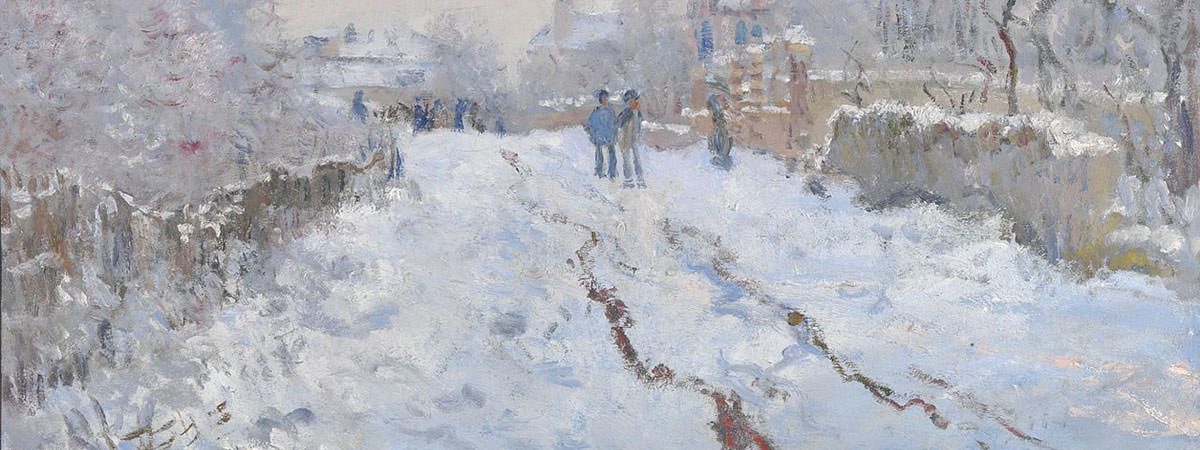Oscar-Claude Monet (November 14, 1840 – December 5, 1926) was a French artist who is among the most revered figures in the history of western art. Monet may be considered foremost a landscape painter who created some of the most famous works in the genre including the Water Lilies series, the Poplar series and Morning on the Seine near Giverny. Monet is closely associated with Impressionism, the art movement whose artists captured the essence of the scene rather than accurately depicting it. It was the Impressionists who made landscape a major theme in western art and Monet led the way with his breathtaking works. Here are 7 beautiful landscapes by Claude Monet including his Impressionist masterpieces in the genre.
#1 Garden at Sainte-Adresse
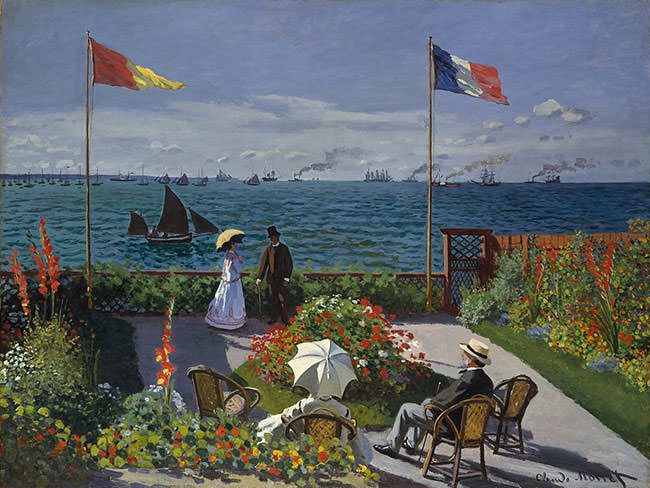
| Location: | The MET, New York |
| Year: | 1867 |
In the summer of 1867, Monet and his family were at Sainte-Adresse, a seaside resort near Le Havre. He created this sunlit scene of contemporary leisure during his time there. The models for the painting are probably his relatives including his father (shown seated in a panama hat). The elevated viewpoint and the even sizes of the horizontal areas are used by Monet to emphasize the two-dimensionality of the painting. This approach show his admiration for Japanese print and it was something that remained an important part of his art style. Garden at Sainte-Adresse was created in the early phase of his long career. It was exhibited at the fourth Impressionist exhibition in 1879.
#2 Wild Poppies Near Argenteuil
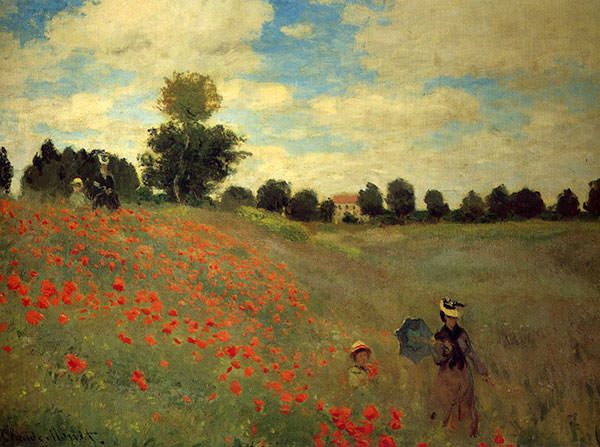
| Location: | Musee d’Orsay, Paris |
| Year: | 1873 |
From 1871 to 1878, Claude Monet lived in Argenteuil, a commune in the northwestern suburbs of Paris. This Impressionist landscape painting was created a year before the First Impressionist exhibition, in which it was displayed. It depicts a mother and child pair in the foreground and another in the background, but the real subject of the artwork is the spectacular landscape with the poppies. In keeping with Impressionism, the informal brushstroke captures a rapid glance of the scene giving no special status to the figures or the other elements. Evoking a stroll along the fields, Wild Poppies Near Argenteuil is a modern painting and it is now one of the best known landscape paintings of the 19th century.
#3 Snow at Argenteuil
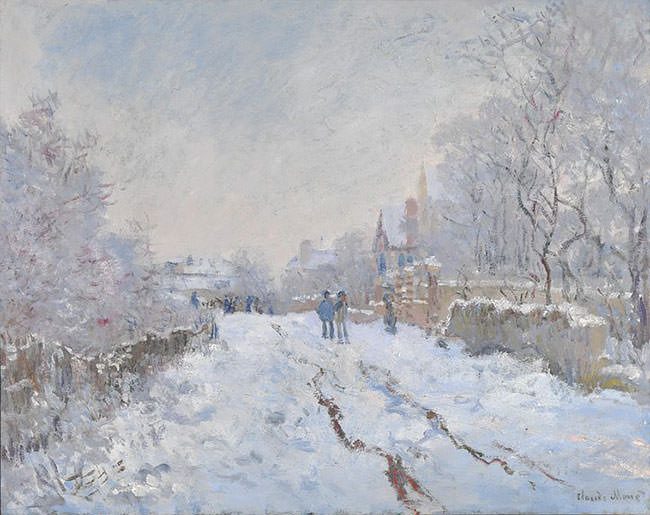
| Location: | National Gallery, London |
| Year: | 1875 |
During his stay at Argenteuil, Monet painted around 200 pictures of the town and its surroundings. This painting is one of eighteen works that Monet created while Argenteuil was under a blanket of snow during the winter of 1874–1875. It is the largest of the 18 paintings with a canvas size of 71 cm X 91 cm. The focus of the work is the atmospheric conditions: the sun fading and the overcast skies. The palette used by Monet is almost monochromatic with only few touches of strong color. To create the illusion of deep snow, the artist has used thicker paint on the road in the foreground.
#4 Poplars on the Bank of the Epte
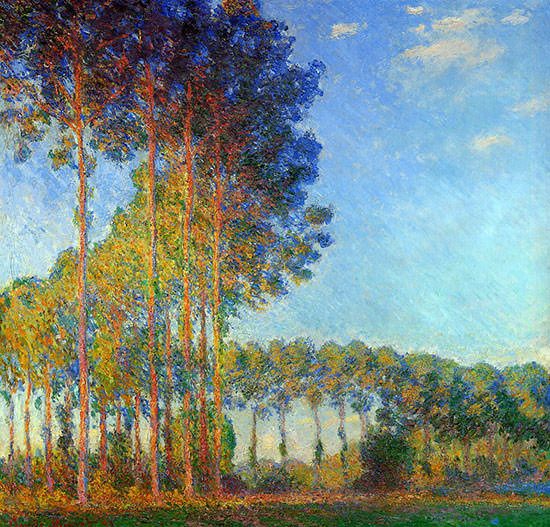
| Location: | Private Collection |
| Year: | 1892 |
Poplars dominated the landscape art of Monet from 1887 till mid-1890s. It was in this period that Monet created some of his best works depicting trees, in which the trees were the central motif. These paintings captured the magnificent trees along the banks of the Epte River, a few kilometers upstream from Monet’s house at Giverny. In 1891, he painted his first formal series showing poplars. Monet created his Poplar series en plein air (outdoors), providing the finishing touches in his studio if necessary. Like in several paintings of the series, the ‘S’ curve is created by the top of the trees in this masterpiece. Although initially termed too decorative by art critics, it later became a selling point for the paintings.
#5 Morning on the Seine near Giverny
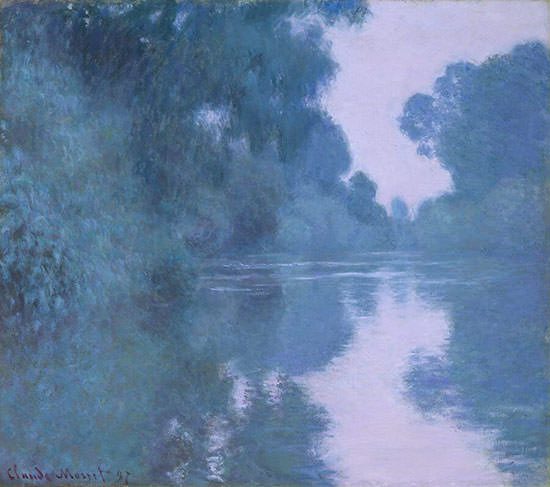
| Year: | 1897 |
The Seine river features in many paintings of Monet. From 1896 to 1897, he captured the river at dawn in a series of 21 paintings known as Morning on the Seine near Giverny. Monet would get up each morning before dawn to paint the changing effects of light as the sun came up. To create the pictures, he used a boat which he converted into a floating studio. What sets this series apart is that he captures the same scene in a very tight time frame to capture minute changes in light. Like all the paintings in the series, this beautiful landscape has been painted in the Impressionist style.
#6 Water Lilies and Japanese Bridge
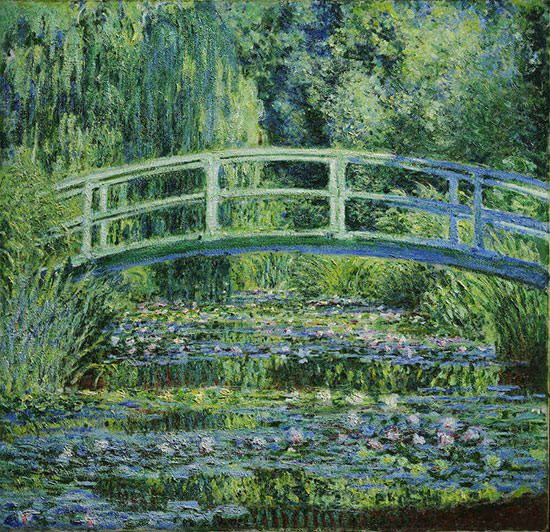
| Location: | Princeton University Art Museum |
| Year: | 1899 |
In 1883, Monet discovered Giverny, a village northwest of Paris. He first rented and then bought a house here, which was to be his home till the time he died in 1926. He build an exquisite natural environment around his home with an elaborate garden, a pond and a wooden Japanese bridge. In 1897, Monet started his renowned Water Lilies Series. This painting is part of 18 works depicting the lilies and the bridge, which he created in 1899. The dazzling complexity of color and light in the painting evokes in the viewer a marvel for nature and its diversity.
#7 Water Lilies
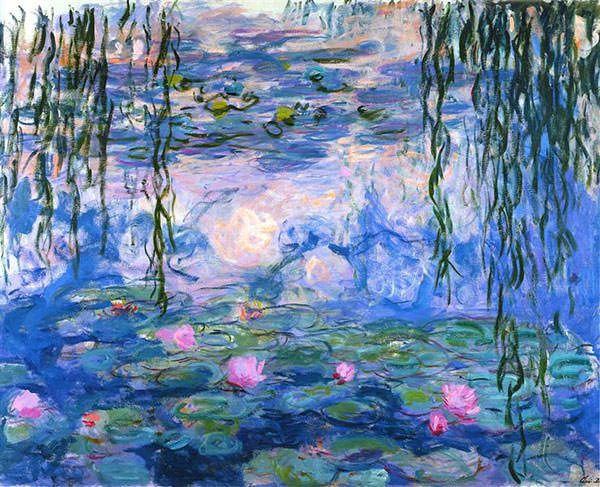
| Location: | Musée Marmottan Monet, Paris |
| Year: | 1916 |
The Water Lilies Series of Monet is his best known work. Consisting of more than 250 paintings, it is regarded as “the Sistine Chapel of Impressionism”. The paintings depict his flower garden at his home in Giverny and he created the series, on and off, for the last 30 years of his life. He began creating this beautiful painting late in his career, around 10 years before his death. The lines in the painting are highlighted in one half and subtle in the other half, giving the illusion of depth. The rich colors, the concentrated shapes and the various tones used by Monet combine to evoke nature for the viewer in this masterpiece.

